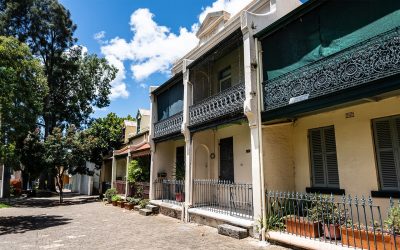Settlement day is a great day. At the end of a long journey to buy a property, settlement day is the glorious finish line. This is the last box to tick, and final piece of the process. Once you’ve reached settlement you deserve to put your feet up and enjoy your new home. Pop a bottle of champagne and celebrate a job well done.
But before you can kick back and enjoy the fruits of your labour, there are some final steps to take in order to make sure you’re getting what you pay for. One of the most important things that you can do leading up to settlement day is a pre-settlement inspection. We’re going to explain what that is and what you’ll want to look for during your inspection.
What is a pre-settlement inspection?
In the week before settlement, you are allowed to visit the property one final time. This is your opportunity to check the condition of the property before you become the official new owner. Any issues you identify in this time are usually the responsibility of the seller, but once settlement occurs, they’ll likely be your problem to deal with.
We recommend doing your pre-settlement inspection the morning of, or close to the time of, settlement. That way you minimise the opportunity of any new damage occurring between your inspection and settlement. It also means that if you spot something seriously wrong, you can contact your conveyancer to discuss how it can be resolved before settlement – or in some cases, they can delay the settlement to make sure it is rectified by the seller.
Buying or Selling?
Get the legal support you need!
What should I look for in a pre-settlement inspection?
Each pre-settlement inspection will be different. The specifics will depend on what you’ve agreed to in the contract, and the condition of the property when you first viewed it. The below list are some examples of what to look for, but not all of these will apply to every buyer and this is not an exhaustive list. If you’re wondering what to look for, you can speak with your conveyancer who should be happy to help with your specific situation.
- Repairs
Often when a buyer views a property they’ll find something that needs to be repaired. In the contract negotiations and settlement period, the buyer can specify what they expect the seller to repair before handing over the property. This could be a cupboard that’s come off its hinges, a cracked window, or a faulty doorbell. At your pre-settlement inspection you can check and make sure that any repairs you’ve agreed on with the seller have been made.
- Chattels and Fixtures
This essentially means the things in the house (If you need a refresher on real estate jargon, we’ve put together a handy guide on our website). The buyer and seller will have agreed on which parts of the house are and aren’t included in the sale. For example, the oven might be staying, but the fridge isn’t. Or the ceiling fans are included, but the seller is taking the curtains with them. Have a look that all the agreed items are either present or removed as you’ve agreed.
- Damage
It’s possible that the property has had new damage since you last saw it. When the seller was moving out of the house, they may have scuffed floorboards or dented walls, or accidentally broken a window or door. It’s also possible that something else altogether has happened, like a burst water pipe that has been flooding the house while no one has lived there. If you don’t identify this new damage in your pre-settlement inspection, then after settlement it will likely be your responsibility. Always make one last check to make sure the property is in the condition you’re expecting.
- Garbage
Unfortunately, sellers can sometimes leave garbage behind, which will likely be your responsibility to deal with after settlement. There may be junk in the garden, or trash from moving out, or potentially a final party they’ve had in the house. We hope it’s not the case, but it’s worth having a look so that you’re not rudely surprised by someone else’s garbage left in your new home.
Use this list above as a part of your checklist for your pre-settlement inspection. Remember that each sale is different, and the agreed terms of the contract will be different too. If part of the property was damaged when you first saw the house and you didn’t say anything about it, it is unlikely that you will be able to suddenly ask for it to be repaired during your pre-settlement inspection. The purpose is to check that the condition of the property is the same as when you first saw it, and that all agreed terms in the contract have been met.
Your conveyancer is here to help. If you find anything unexpected during your pre-settlement inspection, speak to your conveyancer right away. Or if you want to know more about what things you can look for with your specific contract, talk to your conveyancer – they will be more than happy to help. For help with other services, utilities, cleaners and more, visit Property Helper today. For free quotes from professional service providers all in one place, Property Helper makes moving a little easier.
Speak to a member of our team today.
This article is provided for general information purposes only. Its content is current at the date of publication. It is not legal advice and is not tailored to meet your individual needs. You should obtain specialist advice based on your specific circumstances before taking any action concerning the matters discussed in this article.
 Call us on 1300 932 738
Call us on 1300 932 738




